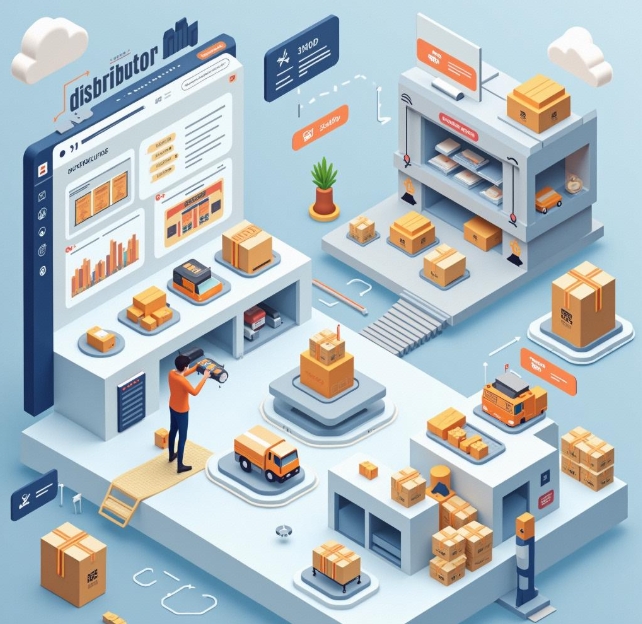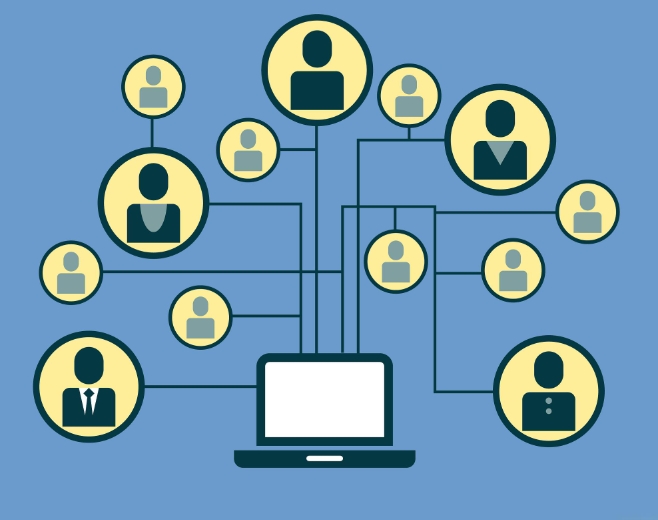Distribution Mall Development and Implementation: How to Create an Efficient Distribution Network
- latest articles
- 1.DApp Development & Customization: Merging Diverse Market Needs with User Experience 2.Analysis of the Core Technical System in DApp Project Development 3.How to achieve cross-chain interoperability in Web3 projects? 4.How does the tokenization of points reconstruct the e-commerce ecosystem? 5.How to Set and Track Data Metrics for a Points Mall? 6.What is DApp Development? Core Concepts and Technical Analysis 7.Inventory of commonly used Web3 development tools and usage tips 8.Development of a Distribution System Integrated with Social E-commerce 9.Six Key Steps for Businesses to Build a Points Mall System 10.What is DApp Development? A Comprehensive Guide from Concept to Implementation
- Popular Articles
- 1.Future Trends and Technology Predictions for APP Development in 2025 2.Analysis of the DeFi Ecosystem: How Developers Can Participate in Decentralized Finance Innovation 3.From Zero to One: How PI Mall Revolutionizes the Traditional E-commerce Model 4.DAPP Development | Best Practices for Professional Customization and Rapid Launch 5.Recommended by the Web3 developer community: the most noteworthy forums and resources 6.From Cloud Computing to Computing Power Leasing: Building a Flexible and Scalable Computing Resource Platform 7.Shared Bike System APP: The Convenient Choice in the Era of Smart Travel 8.How to Develop a Successful Douyin Mini Program: Technical Architecture and Best Practices 9.How to Create a Successful Dating App: From Needs Analysis to User Experience Design 10.From Design to Development: The Complete Process of Bringing an APP Idea to Life
In the internet era, the e-commerce industry has rapidly developed, and distribution malls, as an efficient sales model, have become an important tool for more and more businesses to expand their market. Distribution malls not only help businesses achieve large-scale sales online but also utilize a multi-level distribution system, allowing every participant to receive corresponding profit shares, thereby motivating more users to join the mall's promotion. By establishing an efficient distribution network, businesses can not only expand their sales channels but also enhance their brand's market penetration and improve overall performance.
However, how to develop and implement an efficient distribution mall system is a challenge faced by many e-commerce enterprises. In this article, we will explore in detail the development process, technical architecture, implementation strategies, and how to build an efficient distribution network through proper design and optimization.
1. What is a Distribution Mall?
1.1 Concept of Distribution Mall
A distribution mall is a distribution model based on an e-commerce platform, where businesses set up a multi-level distribution system, allowing users not only to purchase products directly but also to earn commissions by recommending and promoting products. The essence of a distribution mall is to leverage the power of the internet and social networks to achieve rapid product circulation and diversified sales channels.
Key features of a distribution mall include:
Multi-level Distribution: Distributors can not only sell products but also recruit sub-distributors, forming a multi-level distribution network.
Commission System: Distributors earn a certain percentage of commissions by promoting products, which are typically tied to sales volume, team performance, etc.
Social Promotion: Distribution malls often rely on social platforms for product promotion, with distributors using social media, friend circles, and other channels to achieve targeted marketing.

1.2 Business Value of Distribution Malls
The business value of distribution malls is mainly reflected in the following aspects:
Expanding Sales Channels: Through distributors' promotions, businesses can quickly expand their sales network and increase product exposure.
Low-Cost Marketing: Compared to traditional advertising, distribution malls promote through word-of-mouth, reducing marketing costs.
Increasing User Engagement: Distributors typically establish deeper interest relationships with businesses, and through commission incentives, enhance user participation and loyalty.
2. Development Process of a Distribution Mall
2.1 Requirement Analysis and Function Design
The development of a distribution mall requires detailed requirement analysis and the design of appropriate functional modules based on business needs. The following are common functional modules in a distribution mall:
User Management: Includes basic functions such as user registration, login, and profile management.
Distributor Management: Used to manage distributor information, including distributor levels, commissions, referral relationships, etc.
Product Display and Management: Functions such as product listing, categorization, search, and promotional activities.
Order Management: Includes functions for order creation, payment, delivery, and returns.
Commission Management: Calculates commissions based on distributor performance and provides withdrawal functionality.
Social Sharing and Promotion: Users can share products on social platforms and invite friends to purchase or join the distribution.
Backend Management System: Businesses can view orders, distributor performance, commission settlements, and other data through the backend management system.

2.2 Technical Architecture Design
The technical architecture of a distribution mall is a critical part of development. To ensure efficient operation, the architecture of a distribution mall needs to be highly scalable, stable, and secure. Generally, the technical architecture of a distribution mall includes the following parts:
Frontend Architecture: The frontend is responsible for user interaction with the mall. Common technology stacks include modern JavaScript frameworks like React and Vue.
Backend Architecture: The backend handles business logic, data storage, and interface communication. Common backend technologies include Node.js, Java, Python, etc., and databases can be MySQL, MongoDB, etc.
Blockchain Technology (Optional): To enhance the transparency and security of transactions, some distribution malls may choose to use blockchain technology for data storage, ensuring that every transaction is traceable and preventing data tampering.
Payment System Integration: Distribution malls need to integrate multiple payment methods, such as Alipay, WeChat Pay, bank transfers, etc., to ensure users can complete payments conveniently and quickly.

2.3 Smart Contracts and Distribution Mechanism Design
In some decentralized distribution malls, smart contracts can be used to automatically execute commission settlements and order management. The use of smart contracts can greatly enhance system transparency and automation, avoiding manual intervention and improving efficiency. The design of smart contracts mainly includes:
Commission Distribution Rules: Automatically calculate and distribute commissions based on distributor sales performance, hierarchy, and other rules.
Distributor Incentive Mechanisms: Set different distributor levels to motivate distributors to promote more products and reward high-performing distributors.
Order Tracking and Settlement: Ensure that the entire process from order creation to payment is recorded on the blockchain, ensuring data immutability.
2.4 Frontend and User Experience Design
The frontend design of a distribution mall needs to focus on user experience, ensuring the mall interface is simple and easy to use while providing smooth shopping and distribution operations. Frontend development typically needs to consider the following aspects:
Responsive Design: Ensure the mall runs smoothly on different devices (mobile, tablet, computer).
Social Features: Integrate sharing buttons in the frontend to support users promoting products or the mall on social platforms.
Payment and Settlement Process: Design a simple and quick payment process while ensuring payment security.
Order and Commission Inquiry: Distributors can check their order status and commission income at any time.
3. Challenges and Solutions in Implementing a Distribution Mall
3.1 Complexity of Multi-level Distribution Management
As the number of distributors increases, the management difficulty of the mall also rises. Especially in multi-level distribution networks, effectively managing the performance and commission distribution of each distributor is a major challenge.
Solution: Develop a refined backend management system with functions such as permission management, data statistics, and report analysis to help businesses track distributor performance in real-time and accurately calculate commissions.
3.2 Payment and Settlement Issues
Payment and settlement are critical issues in the operation of a distribution mall, especially when involving multi-level distribution and commission settlements, where system efficiency and accuracy are crucial.
Solution: Adopt efficient and secure payment interfaces and design an automated commission settlement system to avoid human errors and delays.
3.3 Platform Security and Data Protection
Distribution malls involve a large amount of user information and transaction data. Ensuring platform security, preventing information leaks, and data tampering are issues that developers need to focus on.
Solution: Strengthen platform security measures, including data encryption, identity authentication, multi-factor authentication, etc., and conduct regular security audits to ensure the platform is protected from attacks.

4. How to Create an Efficient Distribution Network?
4.1 Design a Reasonable Commission Incentive Mechanism
To create an efficient distribution network, a reasonable commission incentive mechanism is essential. By setting different commission rates and reward policies, distributors' enthusiasm can be motivated. For example, performance-based commissions and team rewards can encourage distributors to recruit sub-distributors, forming a broader promotion network.
4.2 Optimize User Experience
The user experience of a distribution mall directly affects the platform's activity and sales performance. Providing a simple and intuitive shopping process, fast payment experience, and efficient after-sales service can greatly improve user satisfaction and retention.
4.3 Establish Data Analysis and Feedback Mechanisms
Through real-time data monitoring and analysis, businesses can promptly identify issues and optimize operational strategies. For example, analyzing which products perform well in the distribution network, which distributors have outstanding performance, and which regions have high user activity can provide a basis for business decisions.
4.4 Strengthen Social Promotion and Word-of-Mouth Marketing
The success of a distribution mall relies on social promotion. By guiding users to share products on social platforms and leveraging users' social networks, viral marketing can effectively increase the mall's exposure and sales.
5. Conclusion
As an innovative e-commerce model, distribution malls are changing traditional sales channels and business operations. Through proper development processes and technical architecture design, businesses can establish an efficient distribution network to drive the rapid development of their brands and products. However, during the development and implementation process, we need to fully consider challenges such as multi-level management, payment settlement, and security, and continuously improve the efficiency and stability of the distribution system through technological innovation and operational optimization.
-

How does the tokenization of points reconstruct the e-commerce ecosystem?
With the continuous advancement of internet technology and the gradual prolifera···
-

How to Set and Track Data Metrics for a Points Mall?
With the rapid development of the e-commerce industry, points malls, as a common···
-

Development of a Distribution System Integrated with Social E-commerce
With the rapid development of internet technology, the e-commerce industry has e···

 Blockchain
Blockchain










